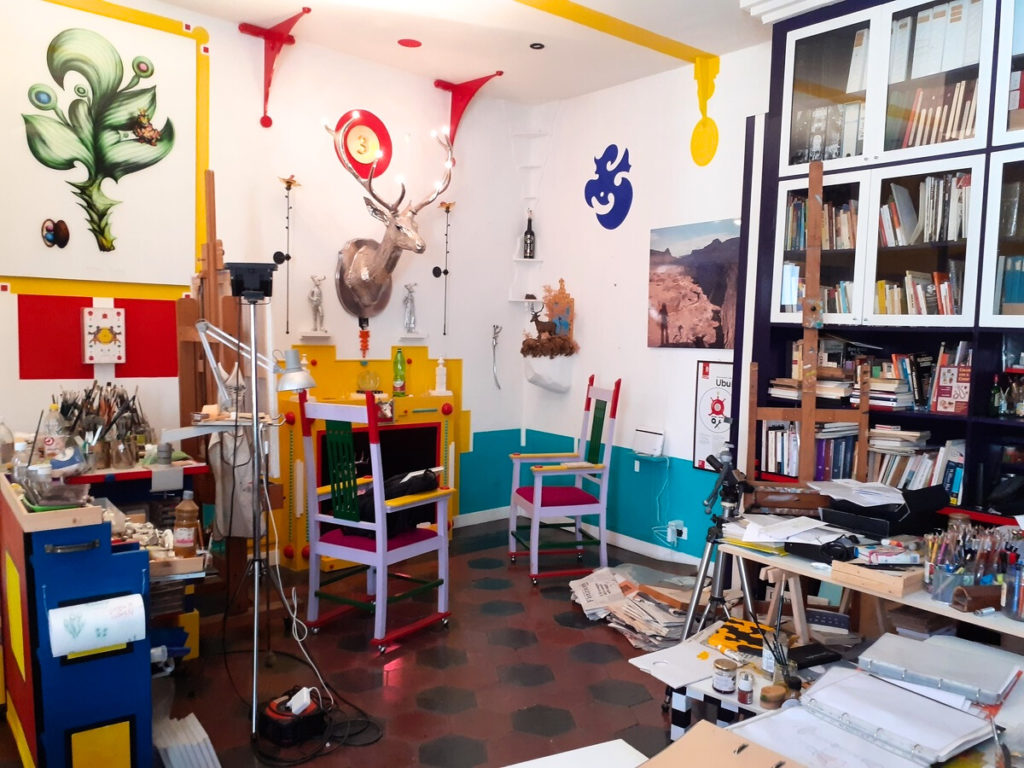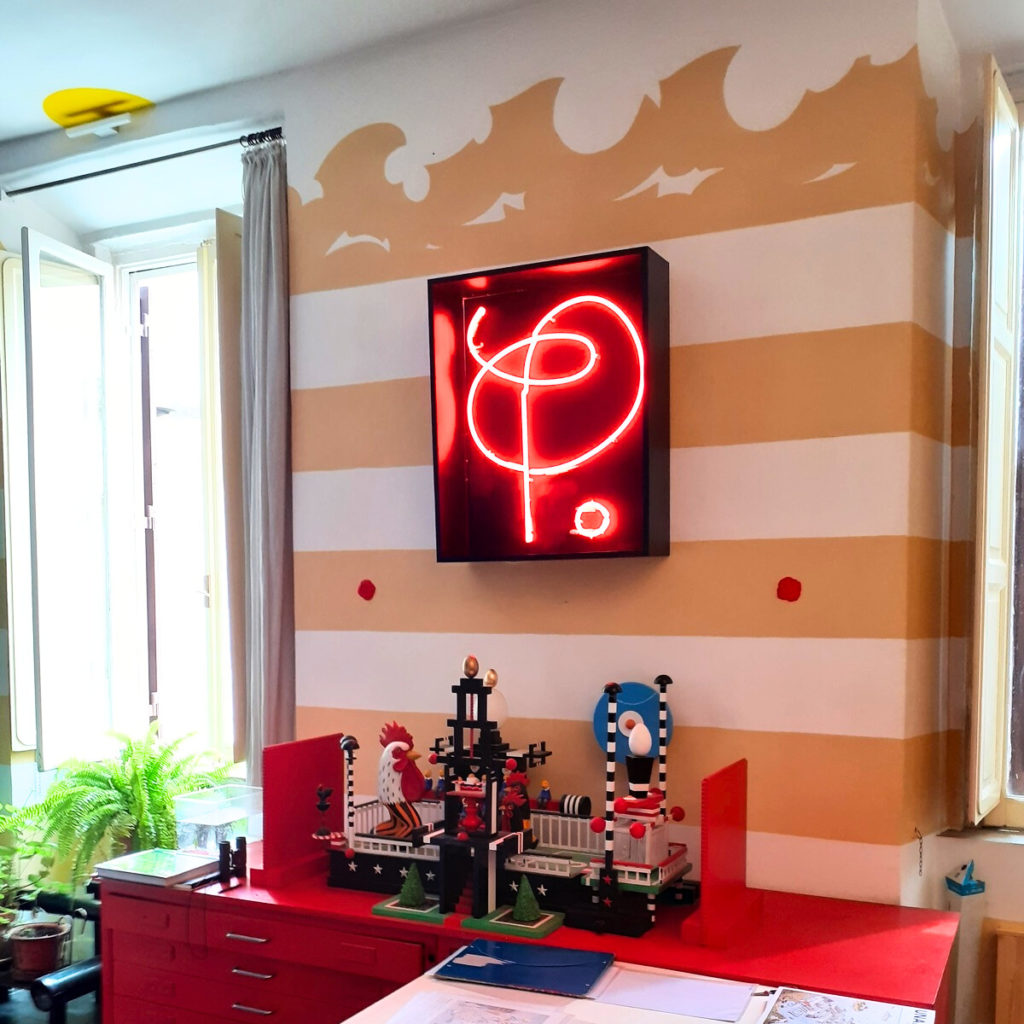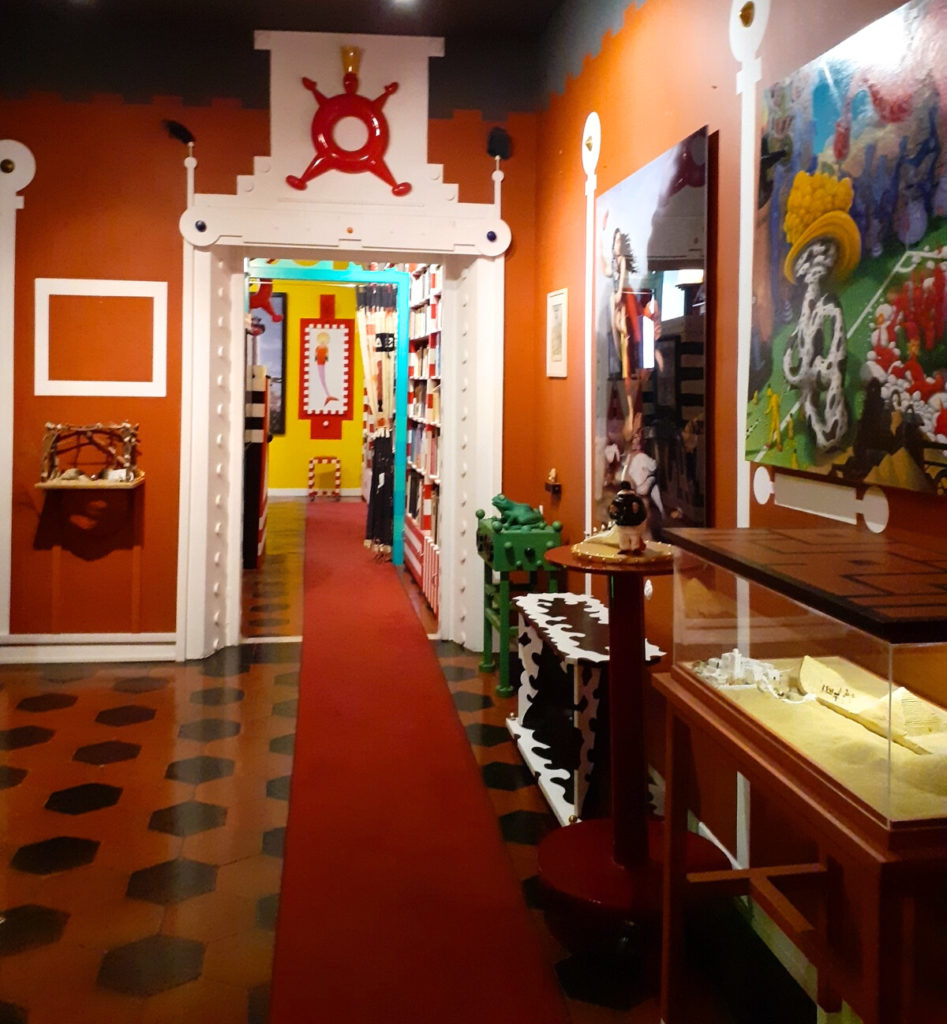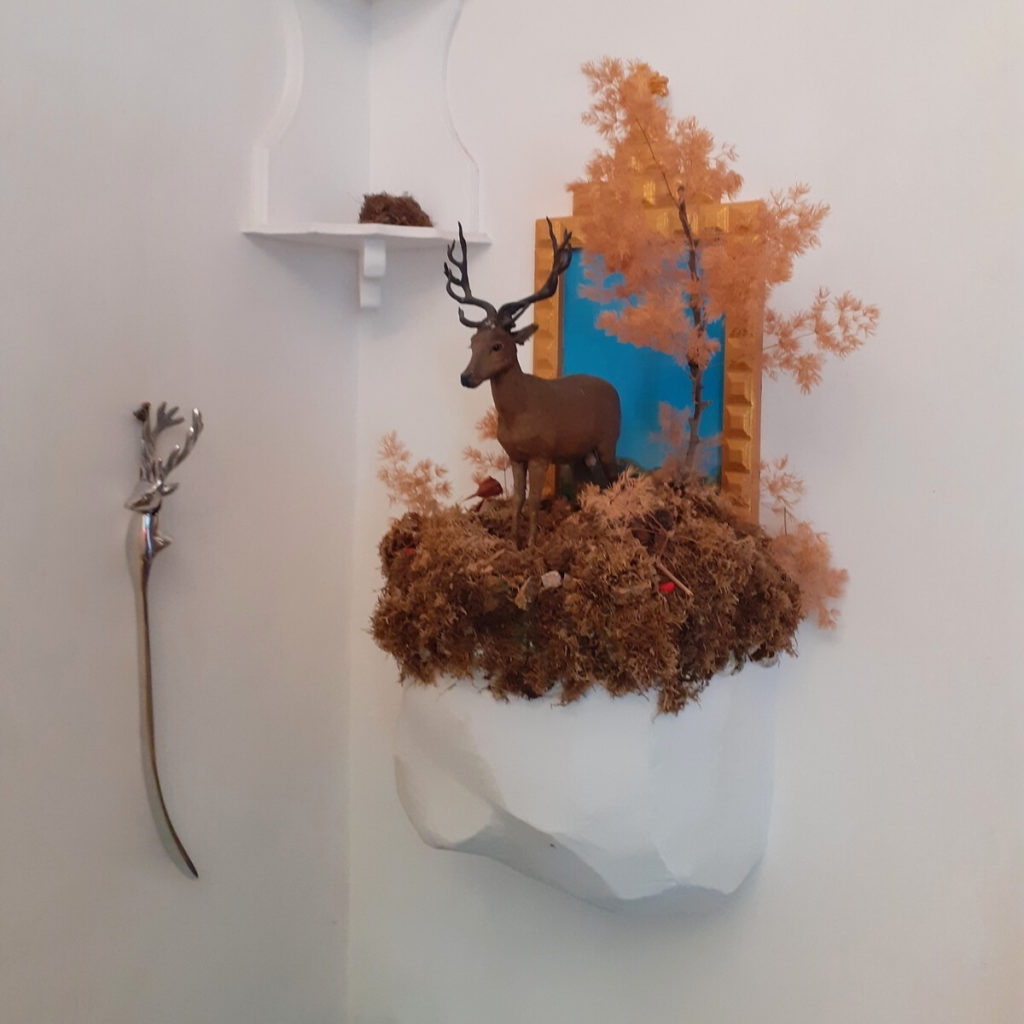Share the post "Codex Seraphinianus, the most mysterious book ever published and other stories. Interview with author and artist Luigi Serafini"
The Codex Seraphinianus is considered among the strangest and most mysterious books ever published which over time has increasingly become a collector’s item in demand all over the world because it especially fascinates collectors and mystery enthusiasts.
Published for the first time in 1981 in two volumes (the following editions will be a single book) by the historic Italian publishing house FMR – Franco Maria Ricci, the work of the author and artist Luigi Serafini (Rome, 1949) is a real encyclopedia that contains an imaginary world in which the reader is invited to explore each page to make sense of each individual representation.
In addition to being a visionary work, it is also an untranslatable book since the writing that accompanies each illustration made with colored pencils and Indian ink is completely asemic, as the author points out:
“It is meaningless writing that has evolved over time; it is a writing that only follows ‘my feeling’ at the moment in which I write and it means absolutely nothing”.
Roland Barthes, Tim Burton, Umberto Eco, and Italo Calvino are just some of the admirers of the Codex Seraphinianus which has inspired many projects around the world, including the choreography of the French Philippe Decouflé, author of the ceremonies of the 1992 Albertville Olympic Games. Furthermore, fake copies of the encyclopedia have been made in China, of which the author also keeps one in his studio.

In 1984 Serafini published the book Pulcinellopedia (piccola / small) with the Longanesi publishing house in 5000 unnumbered copies: a volume dedicated exclusively to the character of Pulcinella made with graphite pencils with touches of red pencils.
The premise of these two of the most important works of his production is no coincidence because they are just a few suggestions to let you imagine what it means to enter Luigi Serafini’s home-studio which is located in Rome, opposite the Pantheon.
Entering his home means going through the story not only of the two books but a parallel world made of colors and works of art with shapes never seen before, which seem to come from the future; between paintings, drawings, and installations, each completes the magical design created by the artist.
It is a unique home of its kind, especially today after so many years, it has acquired a very important historical and artistic value.
Unfortunately, this space risks being destroyed forever because the owners of the walls, the Order of the Knights of Malta, have decided to evict the tenants of the building for new projects.



Artists’ homes should become museums as was the case for Giacomo Balla’s Home, not far from Serafini’s, but evidently, in Italy, this does not always seem possible; we remain hopeful that in the future, however, it can be opened to the public as a museum, where everyone can access and breathe the truly surreal world of Luigi Serafini.
“It is a story that reveals incredible legal gaps and this could not have happened in France, because there is great protection for similar situations, which in my case tells of 36 years of work”, explains the artist.
Continue on MuseumWeek Magazine.
